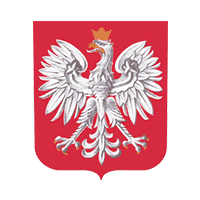Magdalena DŁUGOSZ-LISIECKA
The article is a review of the principles of the safety collecting, presenting and trading of the radioactive minerals, with particular emphasis on current legislations. Activity concentrations of the three isotopes 238U, 232Th and 40K determine whether a given mineral meets the definition of a radioactive source and can be apply to assess radiological exposure for the human. For proper radiation protection, it is important to maintain the basic principles, including the rules of distance, limitation of the time and using of the shield. Particular attention has been paid to the need of radiation protection of the private owners of unique radioactive collections. Trade and transport of minerals defined as radiation sources requires notification or authorization on similar principles as their storage. The paper describe more specific duties for museum collections of radioactive exhibitions due to the publicly available and guidelines for the classification of a package containing radioactive minerals, in the public transport.
Piotr BAŃKA, Mariusz KOSZYK
The article presents the results of tests of air coolers utilizing ice and Dräger cooling cartridges, working in the W-70 breathing apparatus (using the SAT-2M device by Faser) and in the Dräger BG-4 plus breathing apparatus. Since the selection of a proper cooler for the breathing apparatus, and the knowledge of the working time of the cooler, depending on the temperature in the mine heading, are significant problems, tests have been carried out to determine the hours worked by a single rescue officer (related to the operation time of the air coolers) depending on the temperature at the workplace. The test was carried out during a rescue drill in the OSRG Bytom - Zabrze testing chamber equipped with a specialized room room - a heat zone. During the test, the operation of the Dräger breathing apparatus was controlled every 15 minutes by opening the coolers and measuring temperature using a Dräger USF 9000 thermal imaging camera, starting with the initial state of -120C and ending with 200C, where the operation of the cooler ended. The ice melting process was similarly controlled during the test, i.e. by opening the coolers every 15 minutes, making sure that the that did not pour out, or that the remaining ice did not fall out. Despite the varied mass and size of the ice in the W-70 and BG-4 plus breathing apparatus, very good results of cooling time were obtained for inhaled air, which ranged from 128 to 225 minutes - depending on the temperature setting. The operating time of the Dräger cooling cartridge was shorter - results from 90 to 120 minutes were obtained, which pointed to better properties of the cooler containing ice.
Piotr TRÓJCA, Rafał PASEK, Zygmunt ZUSKI
A comprehensive modernization of all elevators was carried out in the "Wieliczka" Salt Mine. Reserve drives and power generators were installed and new organizational and technical solutions were implement to ensure the safe evacuation from elevator vessels. In the event of a power outage, the organizational and technical solutions implemented assume the use of power generating units, or the gravitational lowering of elevator cabins to the nearest level. In the event of failure of the main engine, they immediately engage the reserve drive or carry out an inspection drive. In turn, in the event that the elevator vessel is stopped in the shaft, they usually enable evacuation utilizing climbing techniques, carried out with the support of GOPR rescue officers. Diversified solutions for safe evacuation of people ensure. As shown by periodic drills of mine services , carried out in coordination with mining rescuers and GOPR group rescuers, these activities have raised the level of safety of tourists, especially those suffering from reduced mobility.

